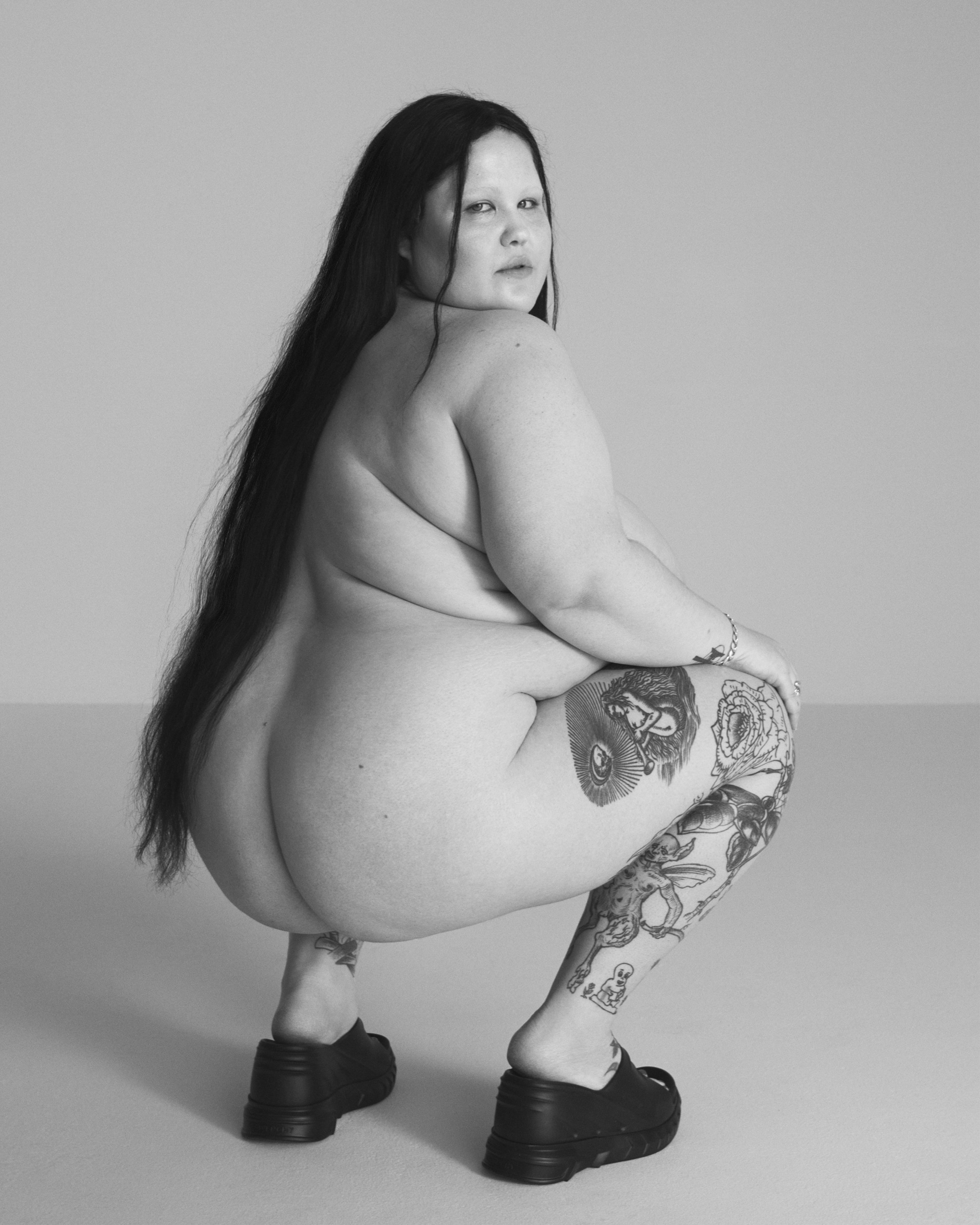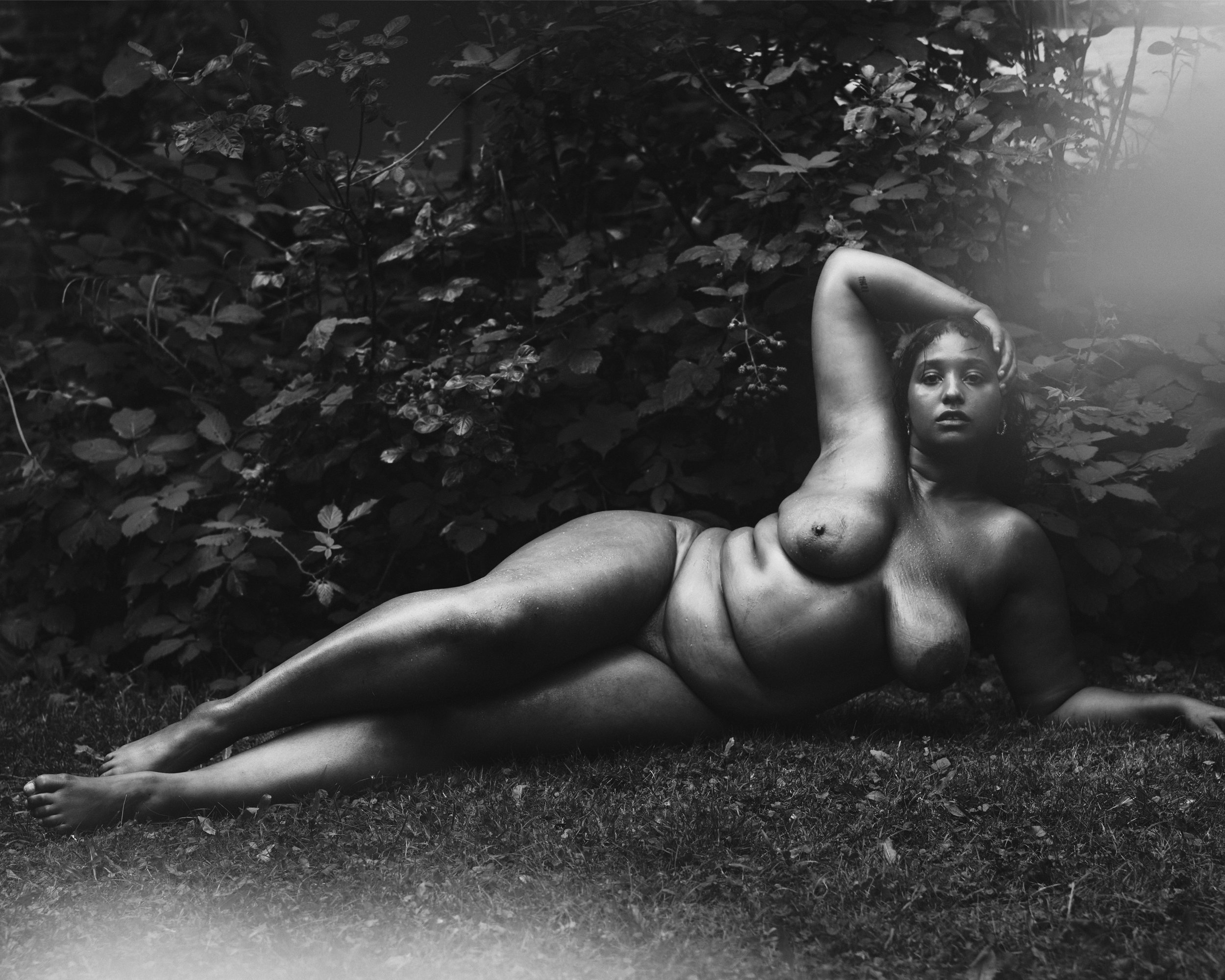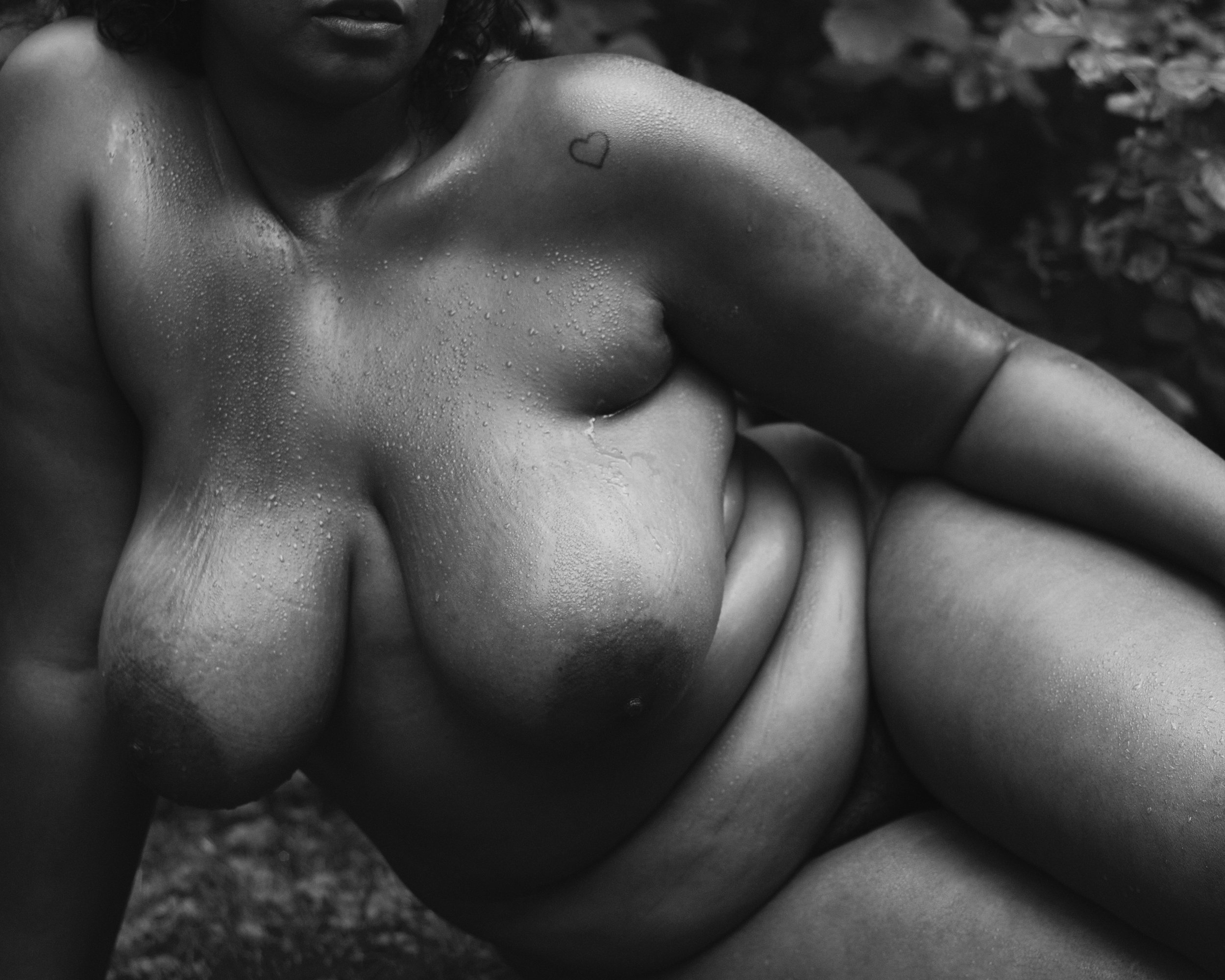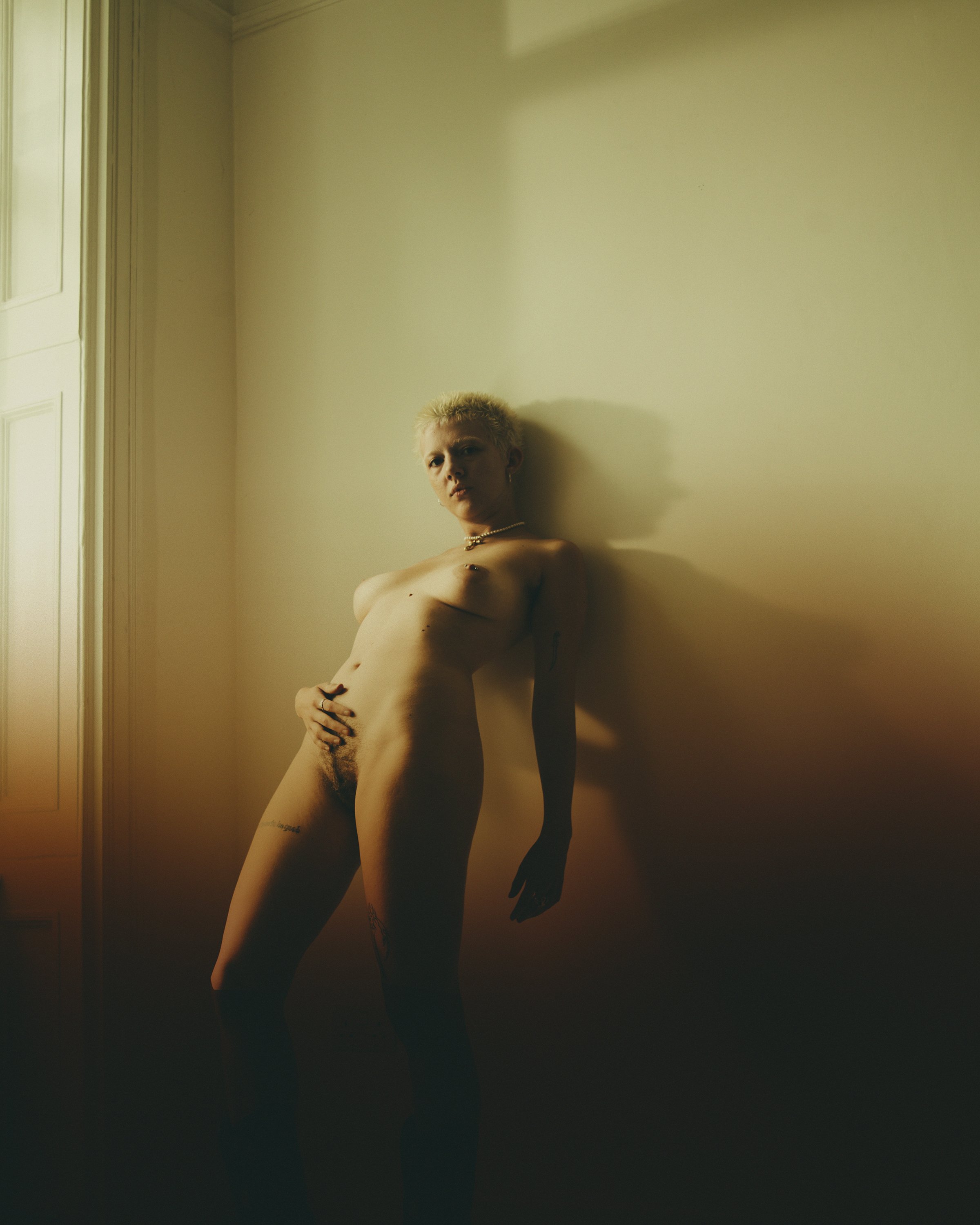Sarah Piantadosi Celebrates Our Bodies The Way We Should
Sarah Piandatosi’s nude photography is a vibe shift in the way we celebrate our bodies.
In an era that birthed the phrase ‘send nudes’, our propensity to see images of bare bodies has never been greater. Yet the authorship and even embodiment of our corporeal vessels can at times feel hijacked as they are simultaneously fetishized, politicised and policed. London-based photographer Sarah Piantadosi’s book, Bone, is a clapback and critique to this long-established patriarchal co-opting. Her collection of nude portraits is revelatory, not by what they expose, but in the defiant way in which they capture the vibe shift within a new generation of artists, writers and culture makers, who refuse to wear their bodies through any lens of exploitation. Piantadosi captures her sitters with a tender eye, in monochromatic full frontals and gently lit portraits, all the while displaying each individual in their raw, vital, and vulnerable power. Sometimes bearing intimate talismans that hint at their story, they proudly proclaim their selfhood to the viewer, daring them to interrogate theirs. And although the book is named after the one thing that’s left of us when our bodies decay, the images speak to the essence of what makes them uniquely ours in the flesh for the brief time that we have them.
When I began to research you and your collection of images for Bone, I read that as a teenager studying photography in your native Winnipeg, your high school assignment wasn’t accepted to be marked because you had documented life of your high school culture around you, including students partying, taking drugs and making out. I understand that now times are so different, but it’s amazing to think of this refusal to see life as it is. I was wondering if you see Bone as coming full circle to this moment. And whether your impetus to photograph has changed since then?
I’m interested in the idea of the ‘other’. Growing up I didn’t find the same things weird as other people did. The strange things in life are violence, subjugation, and lies. Not sexuality, gender or the way one chooses to present themselves to the world. My point of view as a photographer and person has become more informed over time but the same impetus is there. Which I think is a desire to both legitimize and canonize the ‘other’ through photography.
I love that among other things this collection of images is almost an homage to a younger generation who are willing to (in your words) ‘be seen’ and ‘be heard’, and you wanted to capture this refusal of be silenced. I was wondering what it was that made you notice this because being older it’s definitely something I’ve noticed and deeply admire as well.
I just turned 40 and most of the people in Bone are in their 20s. I feel like my age group tolerated too much, and we didn’t really understand our power. Social media brought power to a younger generation (though it’s a double-edged sword that brings both accountability and endless scrutiny). The democratization of the voice through social media that powered both the #MeToo and the Black Lives Matter movements was a huge turning point in the world. The dialogue around the representation of gender, race, class, and sexual identity is so strong right now. It’s incredibly inspiring and essential, and I wanted to capture this moment.
Within these photographs, there is such a feeling of intimacy you’ve helped portray. In a way we’re so used to seeing naked bodies now, but often it’s in a context that has been devoid of this intimacy. I know this was important to you to build with these images and you chatted with your subjects for half an hour beforehand to help create it. I was wondering if throughout the process you were surprised by how the images turned out, or something you weren’t expecting came out in the end result?
Thank you, I’m glad I was able to achieve this feeling of intimacy in the photos, it was really important to me. Towards the end of shooting Bone, I had a really strange experience taking photos in Paris. My subjects there were incredibly open and ready to be vulnerable in front of the camera, more so than in London. After a day or two of shooting, something strange began to happen… I felt like I could read their minds, and I could understand a lot about them just by looking at them. The experience was quite psychedelic, as I felt I was watching their inside character and emotions emerge on the surface in real-time. It was sometimes scary. I have never experienced anything like this before or since.
Wow. That’s such an amazing thing to experience, and I can see now how it's reflected in the photos too, some of them are so raw and vulnerable and yet powerful because of that. For me they’re also like maps to the universe that each person holds within them. The way each body is shaped, the scars, the piercings, the tattoos, the stretch marks, the hair or lack of it, as well as each of their personal talismans. Because of the range of people you chose to photograph, it’s been such a reaffirming way for me to look at other people’s bodies as well as my own. I was wondering what it was like for you? How did it change or reaffirm the way you looked at others and yourself?
I’m really happy to hear you say that the images were reaffirming for you. I wanted people to look at the images and not feel intimidated but rather welcomed to observe. Seeing only one body type in the media (white, thin, tall) is damaging for our collective self-esteem. It was refreshing and meaningful to photograph—and by photographing, promote—a variety of body shapes. And it did have an impact on the way I saw myself. In the past if I was unhappy with my body shape I used to call myself ‘fat’ as an insult. Even though I would never see others in this way I somehow felt it was ok to weaponize this language against myself. I now challenge myself on the language I use to think about my own body.
That’s so funny, I’ve been trying to be watchful about the language I use towards my body too, and to be honest, seeing the range of body types in Bone and the way that they’re celebrated has helped me to do so as well, so thank you. I know that some of these photos were more of a collaboration and because you shot on digital you were able to show your subjects your photos and do reshoots. What was one shoot that changed in this process, that sticks out in your mind?
The image of Yasmin El Yassini with the lit match in her mouth was a reshoot. The first round of images were nice but we got to know each other a lot better after the shoot, and I felt we could go deeper. The second time around there was already a friendship and a trust there, and as a result, more openness.
You’ve said before that this project was a way for you to interrogate your own discomfort with the power dynamic involved in shooting nude photography, and I wanted to talk about whether you did manage to get rid of this discomfort and how?
I thought a lot about the #MeToo movement and in particular Emily Ratajkowski’s shocking story of a male photographer that raped her and then made a book of his images of her. Also, Kate Moss coming forward about her uncomfortable experience modelling nude (and underage) for Calvin Klein in the nineties. I thought a lot about the structure of a nude shoot and how I could run a shoot in a responsible and respectful way. Through sheer experience of photographing over 50 people nude, I just learned a lot as well. I feel really confident running a nude set now. I think photographers need to really consider the subject's point of view and give them autonomy to decide their own boundaries and the power to veto images that make them feel uncomfortable. I think a lot of photographers don’t want to share this power with their subjects, but this process felt right for me. I did have a few people who decided after the shoot that they didn’t want to have images of themselves nude in the world after all, and I respected that decision, as I didn’t feel it was my decision to make.
I love that Ryan Skelton’s poem that prefaces the book ends with a single word of ‘home’ because that’s essentially what these bodies in Bone are. I was wondering if you could tell me a bit about why you chose Ryan’s poem?
Thank you for asking me about the poem, as interviewers rarely do. Ryan Skelton’s poem is so beautiful. It really captures what it’s like to be young, to experiment, and to get things wrong. To live and lust and chase love, but also to be violated and hurt. I feel like the poem is an ode to recovery, a promise to oneself to learn and move forward after trauma. Ryan is actually in the book. He features twice on the last 2 pages of photography, so he bookends the project with his poetry at the beginning and image at the end.
I guess nude portraiture to some extent requires a certain vulnerability of the subject, and yet each photo of yours feels so empowered—at times your sitters wear their bodies so proudly it feels like they’re wearing clothes. I was wondering how you managed to hold and create this contradiction in your photos?
I really like your observation that the body is worn as proudly as clothes. I’m always thinking about power dynamics, and how visual signifiers affect perception. I play with these signifiers to harmonize moments of both strength and vulnerability.
I was also wondering if you’d had any feedback from your subjects in terms of how the process of sitting for you awoken an awareness in them?
I was very touched by the people who showed up with hesitation but took the opportunity to push themselves out of their comfort zone. I had an assumption that only people who were very comfortable with their bodies would be interested in posing nude. I was so wrong. So many people showed up with fears and insecurities but wanted to be a part of the project regardless. To be part of that awakening process was special to me.
If you’re in the US and Canada you can purchase Bone from here and if you’re in Europe or anywhere else in the world, find it here.








